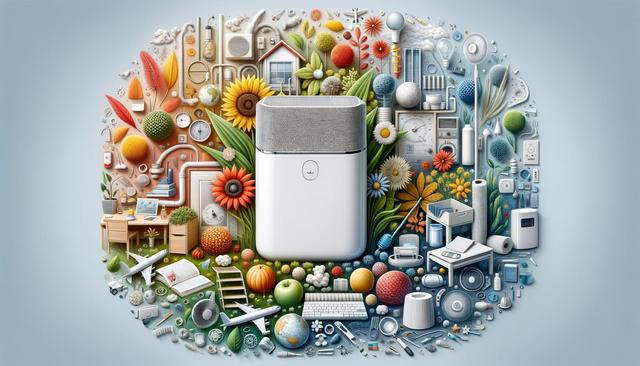
Portable Oxygen for Travel: Compare Devices, Prices, and Buying Options
Understanding Portable Oxygen Devices for Travel
Portable oxygen devices have become essential tools for individuals who require supplemental oxygen while maintaining an active lifestyle. These devices are specifically designed to be lightweight, compact, and battery-powered, making them suitable for travel by air, land, or sea. There are two primary types of portable oxygen systems: portable oxygen concentrators (POCs) and compressed gas cylinders. POCs draw in ambient air, filter it, and deliver oxygen-rich air to the user, while compressed cylinders provide pre-filled oxygen in small, transportable tanks. Understanding which type of device fits your health requirements and travel patterns is the first step in choosing the right equipment.
Travelers should also consider features such as continuous flow versus pulse dose delivery, battery life, noise level, and ease of use. Some devices are approved by airlines, making air travel more convenient, while others might be better suited for road trips or cruises. Additionally, patients should consult with a healthcare provider before selecting a device, as oxygen needs may vary based on medical condition and altitude exposure during travel.
Comparing Key Features and Specifications
When comparing portable oxygen devices, focus on the features that impact daily use and travel convenience. Size and weight are crucial factors, especially for users who plan to carry their equipment for extended periods. Most portable oxygen concentrators weigh between 3 to 10 pounds and can be carried in a shoulder bag or rolling case. Battery life is another major consideration; some models offer up to 10 hours of usage on a single charge, while others may require frequent battery swaps or access to power outlets.
Important features to compare include:
- Oxygen output settings (pulse dose vs. continuous flow)
- Battery duration and charging time
- FAA approval for air travel
- Ease of maintenance and filter replacement
- Noise level in decibels (important for quiet environments)
These features can significantly affect comfort and usability, so travelers should prioritize what matters most to their lifestyle and travel habits.
Price Ranges and Budget Considerations
Portable oxygen devices come in a wide range of prices, influenced by brand, technology, and included accessories. Entry-level models may start around $1,500, while advanced devices with longer battery life and higher oxygen output can exceed $3,500. Rental options are also available for short-term travel needs, offering a more affordable solution without a large upfront investment.
Additional costs to consider include:
- Replacement batteries and accessories
- Maintenance and service plans
- Carrying cases and travel carts
- Insurance coverage or reimbursement options
It’s important to factor in both the initial purchase price and the ongoing costs of operation. Some insurance plans may cover part of the expense, especially if the device is deemed medically necessary. Checking with your provider and exploring financing options can help manage the costs more effectively.
Where to Buy and What to Look For
Portable oxygen devices are available through medical supply stores, specialized online retailers, and occasionally local pharmacies. When purchasing, ensure the supplier is reputable and offers customer support, warranties, and service options. Many online platforms provide detailed product comparisons, customer reviews, and video demonstrations to help buyers make informed decisions.
When selecting a supplier or product, look for the following:
- Clear return policy and warranty coverage
- Availability of customer service and technical support
- Delivery options, especially for time-sensitive travel plans
- Availability of accessories and replacement parts
Buying from certified dealers ensures the device meets regulatory standards and includes necessary documentation for airline travel or insurance claims. Some retailers also offer consultation services to help match users with the right device based on their oxygen prescription and travel itinerary.
Preparing for Travel with Portable Oxygen
Once you’ve selected the right device, preparing for travel involves a few key steps. First, check with your airline or transportation provider for specific regulations regarding medical oxygen devices. Most airlines require advance notice and documentation from a healthcare provider. It’s also advisable to bring extra batteries, power cords, and adapters, especially for international travel or extended trips.
Tips for traveling with portable oxygen include:
- Carry a copy of your oxygen prescription and a letter from your physician
- Pack your device and accessories in a carry-on bag for easy access
- Test the device before departure to ensure it’s functioning properly
- Know the location of power outlets at airports or in vehicles
- Plan for layovers or delays with backup power options
Being well-prepared helps reduce stress and ensures that you can travel safely and comfortably. It’s also wise to research emergency services and oxygen access at your travel destination in case unexpected needs arise.
Conclusion: Choosing with Confidence
Finding the right portable oxygen solution for travel involves assessing your medical needs, comparing device features, and considering your budget. With many models available, it’s possible to find a unit that balances functionality, comfort, and convenience. Whether you’re planning a vacation, visiting family, or embarking on a business trip, having the right equipment can make a significant difference in your travel experience. Take the time to compare options, consult with professionals, and plan ahead to ensure a smooth and confident journey.


